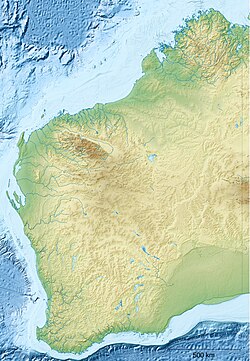Land
The national park covers a total area of 5,764 square kilometres (2,225 sq mi) [1] and was created in 1964 to protect the catchment area of the Prince Regent River. The northern boundary of the national park abuts the southern boundary of the Mitchell River National Park creating a protected area of over 7,500 square kilometres (2,900 sq mi). [2] The landscape of the reserve ranges from lush rainforest to sandstone plains. The area contains gorges, waterfalls, cliffs and mountain ranges.
Careening Bay, on Coronation Island, site of "The Mermaid Tree" (after HMS Mermaid, Philip Parker King's ship) is within the park. The boab tree was inscribed by the ship's carpenter when the vessel was deliberately careened (beached) in order to undertake repairs. [3]
Traditional owners
The traditional owners of the area round the river are the Worrorra peoples, [4] [5] but the park lies mainly in Wunambal land. [6]
As part of the same native title claim lodged in 1998 by Wanjina Wunggurr RNTBC known as the Dambimangari claim, [7] which included claims for the three peoples in the Wanjina Wunggurr cultural bloc, referred to as Dambimangari (Worrorra), Uunguu (Wunambal) and Wilinggin (Ngarinyin), the Uunguu parts of the claims were determined on 23 May 2011. This gave native title to the Wunambal people over 25,909 km2 (10,004 sq mi), [8] [9] stretching along the coastal waters from the Anjo Peninsula in the north, including the waters of Admiralty Gulf and York Sound, down to Coronation Island. Inland, it includes parts of the Mitchell River National Park and the Prince Regent National Park. [10]
This page is based on this
Wikipedia article Text is available under the
CC BY-SA 4.0 license; additional terms may apply.
Images, videos and audio are available under their respective licenses.


